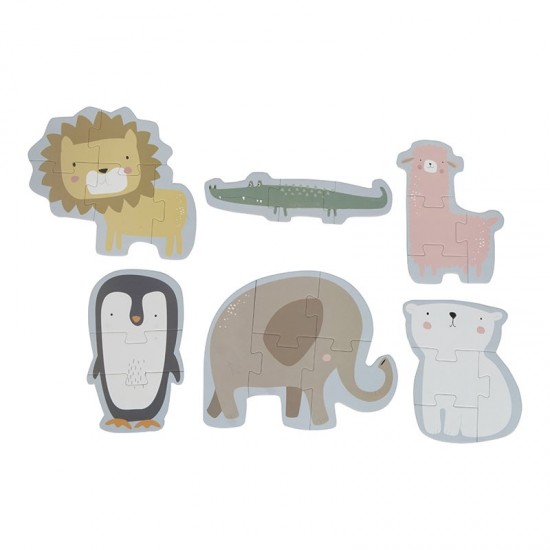
A "ribbon cast-on" or "backwards Loop cast on", a long tail cast-on is an extremely simple and quick way to cast on. It's a great option for beginners. It is easy-to-understand and produces a neat edge. It is versatile. It can be used to do double knitting or colorwork. This tutorial will show you how to cast on knitting with long tails, and includes step-by-step instructions and a video.
First measure the length to which you would like to attach the yarn. This will help determine how many skeins you will need. If you have a small project, you can cast on with one skein, but if you are casting on a larger project, you will need two skeins. A heavier weight yarn may require you to add additional stitches but you should still have the ability to cast on.
To create a slip-knot, first make sure you have a long enough tail. Take a length of yarn and hold it in your right palm. Next wrap the yarn around you index finger. This will secure the tail yarn.

Next, place the tip of your needle under the strand. Then, you will need to bring the tip over the loop created by the tail wool. This will create the first stitch. Make sure your loop is as close to your next stitch as possible when you cast on. This helps to keep the stitches clean.
Next, knit a row with the long tail. Then, turn the knitting around to knit the next row. This will create a row of foundation loops. Sometimes, you may have to flip the knitting around multiple times before reaching the end. You will then need to weave the ends in. This will ensure that the stitches are even and easier to knit in the next row.
It is possible to have your fingers repositioned after each stitch, but this is not uncommon for novice knitters. It is important to maintain an even tension. It takes practice to hold the yarn around your fingers so that the stitches are even and not crowded. Additionally, you should use yarn with the same weight. This will give the stitches a more uniform look and prevent you from tightening the last stitch's bottom loop.
You can also use a center-pull yarn cake or a center-pull yarn cake. This yarn cake uses both ends of the yarn. Casting on knitting with long tails is simple, but it can take some practice.

When knitting the first row of a row, be sure to use the active yarn. You should also make sure that you are working close to the tip of the needle, which will help you to avoid crowded stitches.
FAQ
Is it possible make a living from a hobby?
Not necessarily.
If you are interested in starting a business that is based on your hobby you can be a millionaire.
Let's take, for example, that you love cooking. You love healthy food so you open a new restaurant.
You only prepare organic meals from scratch. To cover the labor and ingredients costs, you will charge your customers a small service fee.
You will eventually be able to grow your client base and hire people who are willing to work with you.
You can eventually expand your menu to include vegan and gluten-free dishes.
This scenario allows you to have the lifestyle you want and a business you can be proud of.
But, it doesn't mean your day job must be abandoned.
You could instead run your own restaurant and still hold your 9-5 job.
What are some great hobbies ideas?
Hobby Ideas for People who Love to Learn and Teach Others.
Hobbies allow you to enjoy what you love while also learning new things.
Although there are many hobbies to choose from, they all share some common characteristics. They're often fun and easy to do.
These include working with others to teach someone how to use an instrument or build an airplane.
Although you might not consider yourself a teacher, there are likely things you can do to help others learn.
Consider starting a hobby to use your creativity to help others.
Where can you find free resources that teach more about hobbies and interests?
There are tons of websites devoted to helping people discover new hobbies.
Here are some of our favorites:
www.trythisathome.com - This site provides a list of over 100 different hobbies. You can also find information about how to start each hobby.
www.hobbyfinders.org - This site offers a database of thousands of activities that you can search by interest, skill level, location, and more.
www.indiebazaar.co.uk - IndieBazaar is an online marketplace designed specifically for independent artists and musicians. The site has hundreds of products, from artwork to music equipment.
www.pinterest.com/explore/hobbies - Pinterest is a social media network that lets users "pin" images they find interesting onto their boards. Users can use boards to organize their favorite things into specific categories.
www.reddit.com/r/Hobbies: Reddit, another social media platform, allows users to post links to articles and videos. Voting is available for users to choose the most valuable posts.
What are your competitive hobbies?
Running, swimming, cycling and tennis are all competitive sports.
They are usually enjoyed by people who enjoy being active, but also allow for social interaction.
You'll likely find others who are interested in your hobby if it involves physical activity.
This may mean joining a club or group where you meet regularly to play sports together.
You could also opt to take part in team games that involve playing alongside others.
These include cricket, football, netball, hockey, netball, soccer, rugby, cricket, rugby, batsball, hockey, volleyball, badminton squash, handball and table tennis.
There are many types competition.
Some competitions exist solely for recreational purposes.
Others are meant to test competitors' skills.
Yet, there are others that reward exceptional performance.
In these cases, the winners receive prizes.
Other competitions are intended to test strength and stamina.
These are called endurance events.
For example, marathon races, triathlons, Ironman Triathlon, etc.
These events are often contested by athletes who train hard.
They will adhere to a strict training program that prepares them mentally as well as physically.
They might also need to be away from their homes during preparation.
It is important to keep in mind that not all athletes can compete in every event.
What are some great hobbies for seniors?
Senior citizens should enjoy engaging in fun activities. They should also try to stay active by participating in sports and other physical activities.
They may be interested in joining clubs to find people with similar interests. This will make them less lonely as they age.
Seniors need to keep up with current trends. You could, for example, follow the latest trends in fashion, literature, and music.
Statistics
- The Role of the Mind in Sex, Dating, and Love: Men in the “humor” condition received phone numbers from 42.9% of the female participants and were refused 57.1% of the time. (time.com)
- Studies show that just six minutes of reading can reduce stress levels by 60 percent. (oberlo.com)
- 37% Video Games 36% Travel 36% Health and Fitness (quizexpo.com)
- Much of this decline reflects the fact that teens are less likely to work today than in the past; among employed teens, the amount of time spent working is not much different now than it was around 2005. (pewresearch.org)
- The intensity of the dialogue partners' bond at the end of the forty-five-minute vulnerability interaction was rated as closer than the closest relationship in the lives of 30 percent of similar students. (time.com)
External Links
How To
How to begin gardening
Gardening is one among the oldest forms. It requires patience, persistence, and determination. You must choose a suitable location to start your garden. You can choose to have a large area or a small one in your backyard. Next, choose what kind of plants you would like to grow. Are you more fond of flowers or vegetables? Some people like to grow herbs and others enjoy raising livestock, such as rabbits. Before you decide on what type of crops to plant you need to take into consideration how much space you have. You might consider growing berries or fruits if you live in a cold climate.
Once you have chosen what you will be planting, you must take some time to prepare your soil. Soil is essential in determining whether your plants will thrive or fail. Organic matter is essential for the health and well-being of your plants. Organic matter includes leaves, twigs (grass clippings), manure, compost, and manure. After you have prepared the soil, you will need to add nutrients. Depending on the type of plants you plan to grow, you may need different amounts of nitrogen, phosphorus, potassium, calcium, magnesium, boron, zinc, copper, manganese, iron, molybdenum, chlorine, sulfur, sodium, and so on. A fertilizer calculator online can help you determine these values. There are many fertilizers available so be sure to know what you are purchasing.
Now, wait for your seeds to germinate after you have prepared your soil and added the necessary nutrients. The process can take between 2 and 3 months depending on how hot or cold it is in your region. Once the seeds have sprouted you will need to water them often. Overwatering your plants can lead to problems. Overwatering can cause problems. Overwatering could lead to root rot as well as fungal diseases. Keep in mind that plants are more thirsty during summer than winter. Remember that some plants require drying out after being watered. Tomatoes for instance need to remain slightly moist, but not wet. Soggy soil is not a good choice for tomatoes. After the flowers have stopped, they must go into dormancy. The time when plants stop producing new life and store energy for the next season is called dormancy. Dormancy occurs when the plant stops sending signals that tell its roots to produce food. Throughout this period, the plant stores energy. However, if the temperatures drop below freezing and there isn't enough sunlight, the plant will go to sleep.
Living in urban areas may restrict the types of plants you can plant. Concrete sidewalks, roads and buildings are common in urban areas. They block sunlight from reaching the ground. Concrete absorbs light which blocks sunlight from reaching the ground below. This is why many plants cannot thrive in cities. There are many plants that can survive in urban environments. Many trees, shrubs, perennials, and other plants can adapt to urban life. Many annuals are also possible to grow indoors in containers. Container gardens allow you to bring fresh greenery into your home year-round regardless of the weather outside.
Now that you have decided where to place your garden, chosen what you will grow, and prepared your soil, you are ready to plant!